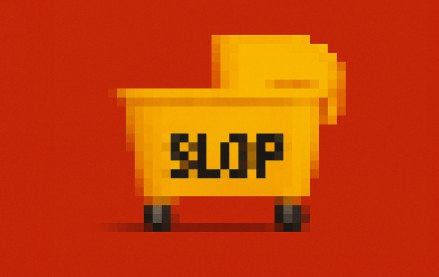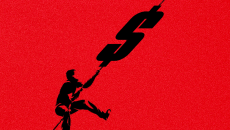Join us Dec. 1-3 in New Orleans for the Digiday Programmatic Marketing Summit
WPP’s Open Pro AI suite already faces competition from Google and Canva

As a Digiday+ member, you were able to access this article early through the Digiday+ Story Preview email. See other exclusives or manage your account.This article was provided as an exclusive preview for Digiday+ members, who were able to access it early. Check out the other features included with Digiday+ to help you stay ahead
Based on its recent earnings, WPP’s financial outlook (and perhaps the traditional agency model overall) looks glib. But the holding company is banking on its AI arsenal, including its newly launched self-service platform aimed at small-to-medium sized businesses, Open Pro, to turn things around.
The trouble is that tech companies like Google and Canva seem to have the same idea. Google on Wednesday (Oct. 29) released Pomelli, an AI marketing tool “designed to help SMBs more easily generate scalable, on-brand social media campaigns.” And on Thursday (Oct. 30), Canva launched its creative operating system, which includes Canva Grow, a marketing platform that allows brands to design and launch ads across platforms like Meta.
Following the launch of similar solutions from Amazon, Comcast and Meta, it means there’s already competition to provide an AI-powered agency-in-a-box.
Playing defense
WPP faces an uphill battle with major client losses and declining revenue. New boss Cindy Rose called its latest results “unacceptable,” adding that the holding company hasn’t “gone far enough or fast enough in adapting to the evolving needs of our clients.” And that’s where Open Pro comes in. The self-service platform launched last week promising brands the means to plan, create and publish campaigns directly. It’s already being pilot tested with existing clients, per Rose. She did not say which specific clients.
“We don’t largely address the SMB and mid-market segment today,” Rose said on WPP’s recent earnings call. “So we expect revenues generated by WPP Open Pro to be incremental and potentially pull through managed services from WPP that are also incremental.”
WPP isn’t alone in its struggles. The agency business as a whole is being upended as clients push for the speed and efficiency that holdcos have been struggling to keep up with — especially in the age of generative AI.
“The reality is that if you are a company that can directly access these tools — if you’re making a few billion dollars a year — you don’t need agencies,” said Jeremy Goldman, senior director of content at eMarketer. He later added, “There’s virtually no agency that’s not really playing defense right now.”
In other words, traditional agencies are facing pressure to modernize and behave more like an enterprise platform than a service shop. It’s likely why holdcos have been snapping up creator-first ad tech tools.
The competition
While WPP is going after small to medium-sized businesses, so too are tech behemoths like Amazon, Google, Canva and Meta, which has historically cornered this market. Canva and Google just released end-to-end marketing tools — less than a week after WPP launched Open Pro.
Canva is increasingly focusing on serving marketing organizations, repositioning itself from a creator-friendly suite to an “end-end marketing tech stack tool,” said Kristine Segrist, Canva’s vp of brand and product marketing. Its marketing tech stack subscription service Canva Grow is intended to streamline the creative process “allowing professional design grade tools to be in the hands of everyone,” Segrist said.
Meanwhile, Google — which raked in $100 billion in revenue for the first time in Q3, per its latest earnings — is presenting its latest Labs solution Pomelli as a means for SMBs to generate tailored campaign assets (so far limited to still images) using a gen AI tool that can analyse their brand based on their existing web presence. As of September, Google already offers the generative AI Asset Studio for larger advertisers via its Ads Manager.
“It can feel daunting if you don’t have somebody that’s an expert… [Pomelli] will help you come up with the creative so that you can reach your customers wherever they may be,” said Jaclyn Konzelmann, director of product management at Google Labs.
She suggested AI tools could remove roadblocks between small brands and higher ad spend by reducing the overall cost of a marketing campaign. “Our goal is really to kind of take some of the burden off SMBs by providing value-add services and essentially giving any small to medium business the power of a marketing team,” she added.
The challenge
WPP hasn’t had to concern itself with small or mid-market advertisers to date. The flipside of that is that small business advertisers don’t necessarily trust its capabilities will suit their needs. And consumer brands like Google, Meta and Canva have brand recognition, especially with SMBs, which WPP and other holding companies lack, said Jay Wilson, vp analyst at Gartner.
There’s also the potential of degradation to WPP’s existing clients, per Wilson. If WPP Open Pro is widely available, it could move paying enterprise-level client business away from their premium agencies (like Ogilvy) toward a self-service model, impacting their high-margin business, he said.
Wilson isn’t alone in this rationale. Roger Beharry Lall, research director for advertising technologies and SMB marketing applications at the International Data Corporation (IDC), also said as much.
“A lot of times large vendors, when they go down market or to mid market, they take a simplistic tactic of lowering the price, slapping a band aid on it, or throwing out a new logo, and that’s about the end of it,” he said.
WPP stole a march on its competitors in launching Open Pro last week. However, it’s too early to tell if the AI-backed bet on agency-in-a-box services for SMBs is going to pay off.
Rose declined to answer questions on Open Pro’s pricing, competition, revenue or the number of subscribers to Open Pro thus far on the earnings call.
“To differentiate from Meta and Google’s free or low-cost tools, WPP will need to layer on higher-value services, which could make the proposition less competitive for smaller advertisers,” Vanessa Cartwright, partner at Milestone Advisory warned. For what it’s worth, Google’s Pomelli tool and Comcast’s recently launched Universal Ads, both come free of charge.
Either way, expect to see more service oriented companies switch gears. Or as Beharry Lall puts it, “software as service suddenly becomes service as a software,” as companies look to build up revenue streams.
More in Marketing

Backlash grows against AI slop, but marketers remain unfazed
Marketers dismiss the rise of “AI slop” backlash, betting that authenticity and quality will ultimately engage audiences.

A shorter shopping window complicates retail’s already challenging holiday season
This season, retailers and shoppers alike are contending with a shorter holiday shopping window — on top of tariffs, waning consumer sentiment and recession fears.

How Reckitt is beating the AI odds with its approach to pilots
Most AI pilots fail miserably. Reckitt’s Bastien Parizot explained how the CPG brand has avoided that fate as it deploys gen AI into its global marketing operation.








